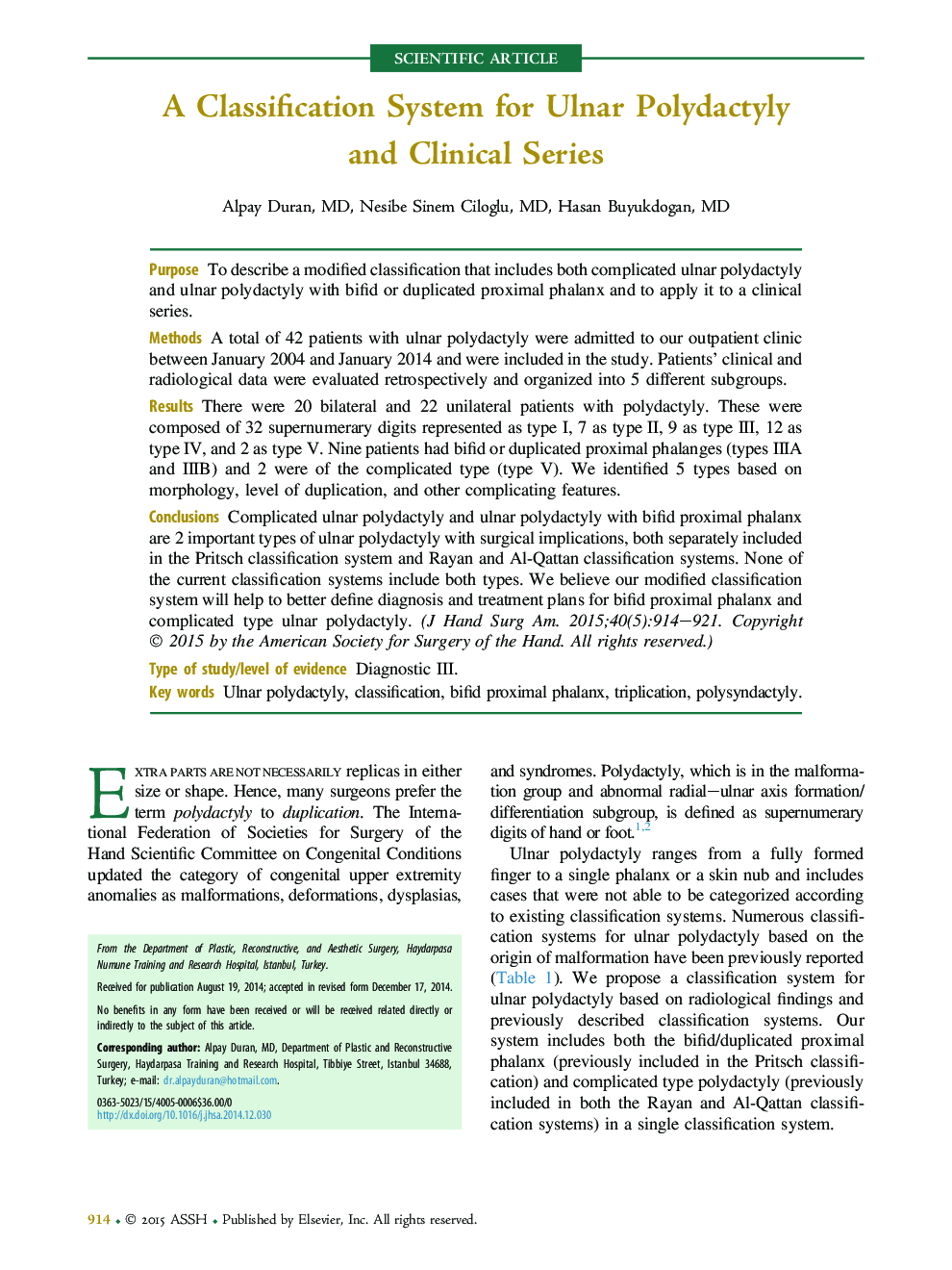| Article ID | Journal | Published Year | Pages | File Type |
|---|---|---|---|---|
| 4066803 | The Journal of Hand Surgery | 2015 | 8 Pages |
PurposeTo describe a modified classification that includes both complicated ulnar polydactyly and ulnar polydactyly with bifid or duplicated proximal phalanx and to apply it to a clinical series.MethodsA total of 42 patients with ulnar polydactyly were admitted to our outpatient clinic between January 2004 and January 2014 and were included in the study. Patients’ clinical and radiological data were evaluated retrospectively and organized into 5 different subgroups.ResultsThere were 20 bilateral and 22 unilateral patients with polydactyly. These were composed of 32 supernumerary digits represented as type I, 7 as type II, 9 as type III, 12 as type IV, and 2 as type V. Nine patients had bifid or duplicated proximal phalanges (types IIIA and IIIB) and 2 were of the complicated type (type V). We identified 5 types based on morphology, level of duplication, and other complicating features.ConclusionsComplicated ulnar polydactyly and ulnar polydactyly with bifid proximal phalanx are 2 important types of ulnar polydactyly with surgical implications, both separately included in the Pritsch classification system and Rayan and Al-Qattan classification systems. None of the current classification systems include both types. We believe our modified classification system will help to better define diagnosis and treatment plans for bifid proximal phalanx and complicated type ulnar polydactyly.Type of study/level of evidenceDiagnostic III.
